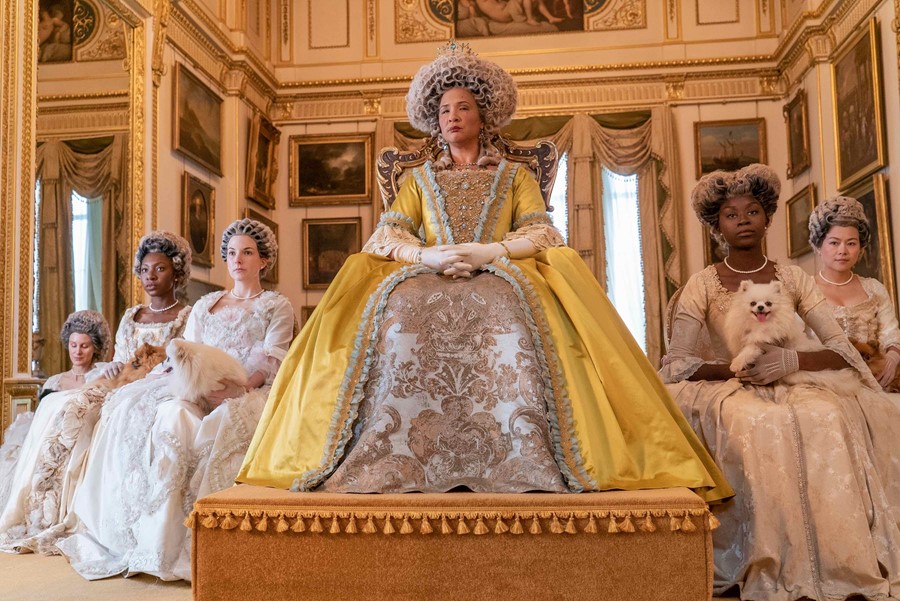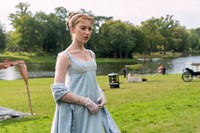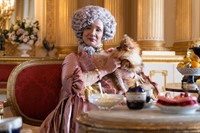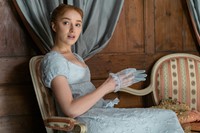Costume designer Ellen Mirojnick reveals what it took to create the costumes for the romance drama – and why Regency style is so timeless
While 2021 has got off to a somewhat shaky start, Netflix’s seductive drama Bridgerton has provided a welcome respite from the onslaught of depressing political and pandemic-related news, reaching an estimated 63 million households since its Christmas Day debut.
The show’s vivid, visually-arresting costumes are undoubtedly a part of its appeal. These pieces – which number a staggering 7,500 – are the work of Ellen Mirojnick, a prolific Hollywood costume designer with three decades under her belt (Wall Street, Fatal Attraction, Maleficent), who translated the style of the Regency era into wardrobe wonderland of Empire-line dresses with low, scooping necklines for women and stately, stiff-collared suiting for men.
For the uninitiated, Bridgerton revolves around the well-heeled, young ladies of Regency England, who are ready to find their marital matches. One such lady, Daphne Bridgerton (Phoebe Dynevor), is determined to find a marriage of love instead of convenience. When she and the highly-coveted bachelor, the Duke of Hastings or ‘Simon’ (Regé-Jean Page), pretend to court, she discovers love in the most unexpected place. All the while a mysterious writer, Lady Whistledown, reports the latest social season gossip that has everyone impatiently waiting for more – including Queen Charlotte herself (Golda Rosheuvel).
While Bridgerton focuses principally on Daphne and Simon, the subplots and societal balls involving family and acquaintances made this an enormous undertaking for Mirojnick. But she was up for the task and, speaking to AnOther, discusses some of the dramatic, behind-the-scenes details.
AnOther Magazine: Can you tell us about how you were brought onto this project and what excited you about it?
Ellen Mirojnick: I was brought on by Shondaland when [show creator] Chris Van Dusen had finished the pilot. There’s always a challenge with Shondaland – I don’t mean a bad challenge, a great challenge, that we needed to transform it into an aspirational feel. What that meant was that we weren’t making an historical drama, we were making a fictionalised romance drama.
AM: What was your brief?
EM: It came from the text that Chris had created and adapted from [Julia Quinn’s] books. I hadn’t read them. But knowing the Shondaland aesthetic, it felt natural – I can’t explain it to you other than it felt natural – to slide into what my challenge was and what I was going to be faced with, because I knew what the end result needed to be.
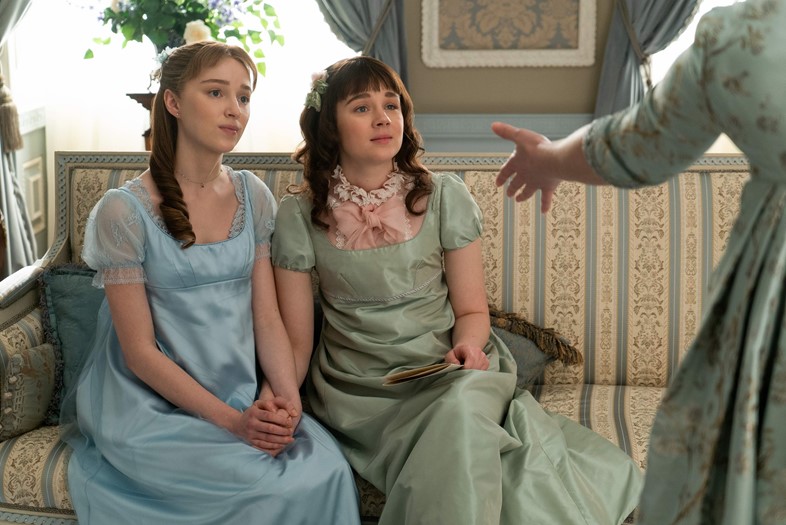
AM: The show features over 7,500 costume pieces. Can you tell us about the process of creating a wardrobe of scale?
EM: We had to create everything because after scouting the costume houses for rentals, there was nothing available that would fit our aesthetic needs. Knowing we had to make everything, we had to logistically plan out the easiest way – the shortest way – to do this. Meaning, if you can picture a costume house, there are just rails and rails of costumes – we had to do the same thing. We got on the phone and thought, who could facilitate this, and quickly bought as much fabric as we possibly could, divided it up and sent it throughout Europe to begin creating the costumes. Although there were five months of preparation, we needed all costumes back within two and a half months. We had clothes made in Budapest, Italy, Spain, the UK, and New York.
AM: Why do you think Bridgerton has been such a hit? And how much do you think the costumes are a part of that?
EM: Bridgerton’s success is happening when our world has been bad and dark. We live with questionable hope, although I would not say that I’m not hopeful. I think at Christmastime, when people couldn’t celebrate together, be with their families, be festive and have a holiday like they always had, Bridgerton came along and gave them just an hour – if you just take one episode at a time – of relief. It’s pretty, frothy, sexy, and sensual. It’s not like anything you’ve seen before. It takes place in 1813; it’s high society, glamorous, luxurious, and aspirational. All of those things get your eyeballs in a festive mood. The costumes are a big part of it because it’s like an ice cream sundae with everything on top. A visual feast with everything: costumes, hair, make-up, sets, glorious characters, great words, sauciness, and sexiness in storytelling. Well, what’s bad? Everything is great!
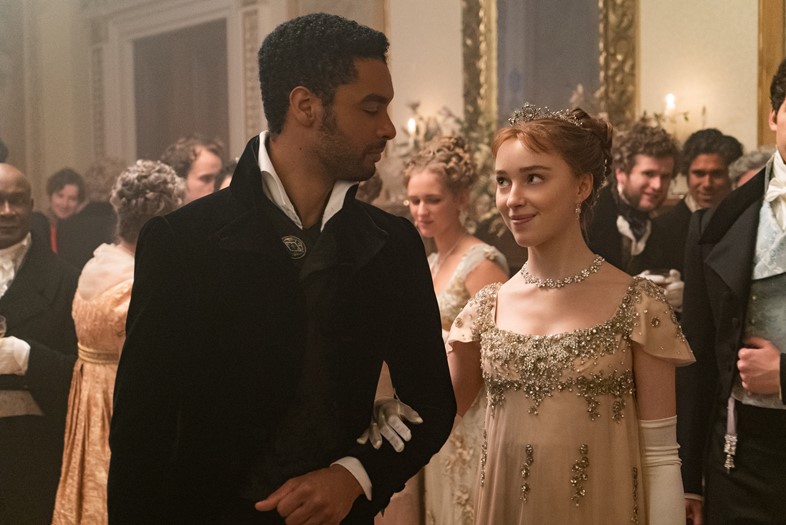
AM: Why do you think Regency style is so timeless?
EM: It’s been interpreted over the course of our history. There was a time when Napoleon was in power and Josephine was his wife. Napoleon loved the Greeks and was fascinated by them. That Grecian style was similar to Empire style. When Josephine subsequently became pregnant, she raised her waist front to under the bust, and we saw glorious Josephine in Empire style.
Everyone looked to France for fashion influence. There was a difference because of the war, there was a shortage of fabric. It wasn’t shipped into the UK: silks and beautiful, luxurious fabrics from France. What you do have in English Regency fashion are plain fabrics: cotton-based and gauze and they can be milled or they can be woollen. They aren’t luxurious so we made it luxurious. We used many different fabrications throughout the show and did not keep to a strict historical fact.
I think when men get dressed up, it’s better than sliced bread. I love the fit and the way it makes men stand: handsome and appealing. As far as women, the Regency silhouette has been translated through the decades. We reinterpreted it in a way in the 60s and brought it back in trend throughout the 00s. It’s an easy style and shape to wear. There is no waist line. It’s lifted to be under the bust.
AM: The palpable sex appeal of Bridgerton shows itself in the costumes. Which wardrobe pieces come to mind immediately when you think of Bridgerton’s sensuality?
EM: I can’t pick one. The cut and the fluidity of the clothes: that’s the difference between historical Regency and the work we had done in Bridgerton’s Regency. Because of our choice of fabric, there was more of a fluidity – you could feel the person walking, being, sitting, dancing, feeling the neckline and the beauty of the bosom, feel the movement underneath the dresses. It’s simply this feeling.
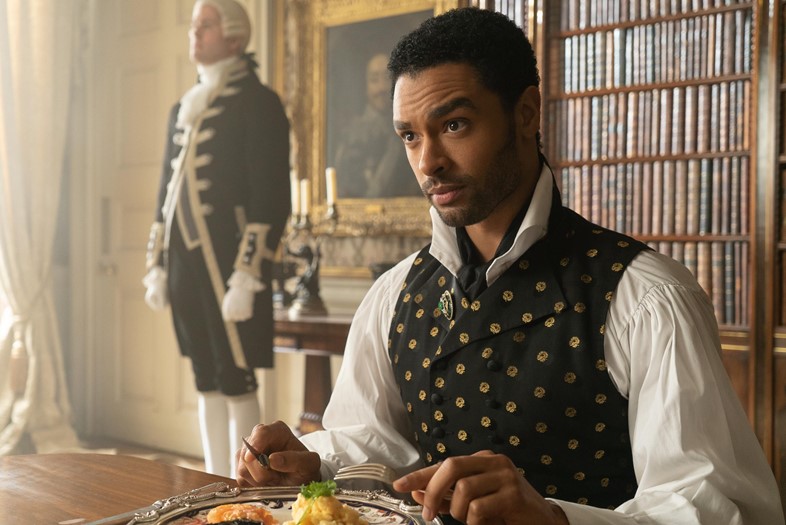
AM: The Duke of Hastings in particular has gained so much attention – can you tell us about working with Regé-Jean Page?
EM: He was quite simple to work with because he happens to be an actor who walks into the fitting room and you know immediately what is going to work and what isn’t. He had a strut and an independence about him when he came into the fitting room as Regé, and then when he became the Duke, it was clear from the minute we put a pair on trousers on him that he was independent, he was unlike any of the other men – he had his own worldview, he had his own spirit, and he travelled and he was not part of the ton. What we needed to find was a silhouette that would amplify all of those character traits. So the collar that we used for him was a little bit taller, it kind of couched his neck and jawline, but we kept the shirt open because there was no need for him to fit in with anyone. We included a scarf and tucked it into his shirt – we didn’t wrap it around his neck, just tucked it in. We had an embroidered velvet for his waistcoat that he could have picked up anywhere along his travels. We used his mother’s brooch as an accessory always on his waistcoat. We don’t bring notice to it but it is something personal to him.
We have samples of a couple of different styles in the fitting room. The first coat we put on Regé was perfect. He only wore dark trousers and the colouration would be in dark red, golds, blacks, a bit silver, and a purple tone. And a bit of taupe colour and grey. There was nobody that was dressed like him in the entire series with the exception of tall boots. Regé brought half the package, and we then costumed him according to what we saw. I looked at him and thought: simple shapes – not fussy. The fabrics of his waistcoats could be ornate. They could have been found in India, China, parts unknown … Morocco?
AM: How did Bridgerton as a series compare to the other highlights of your film career as a costume designer?
EM: It was an extraordinary experience. I had to be logistically creative with many situations I was faced with. It was a creative dream, a logistical conundrum, and I worked with more talented people on one team than I’ve ever had the opportunity to work with before. It doesn’t compare because of the size, the amount of costumes, and the fact that we had to create everything.
When I did The Knick, it was the only thing in my career that’s similar in terms of length of time of storytelling. But it was much smaller and contained. There was one director, the brilliant Steven Soderbergh. Bridgerton on the other hand is eight hours and eight times the size. We worked with multiple directors. But that one director equals Chris Van Dusen and Shondaland. They were supportive and went along with the vision that we created from the beginning. I don’t know if anything will ever come close. I have had a blessed career and I’m happy with the opportunities I have had. But this is the best icing on the cake that I could have ever dreamt of.
Watch Bridgerton on Netflix now.
